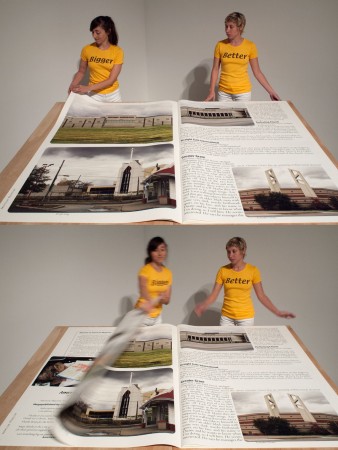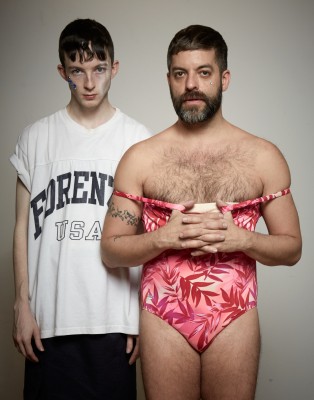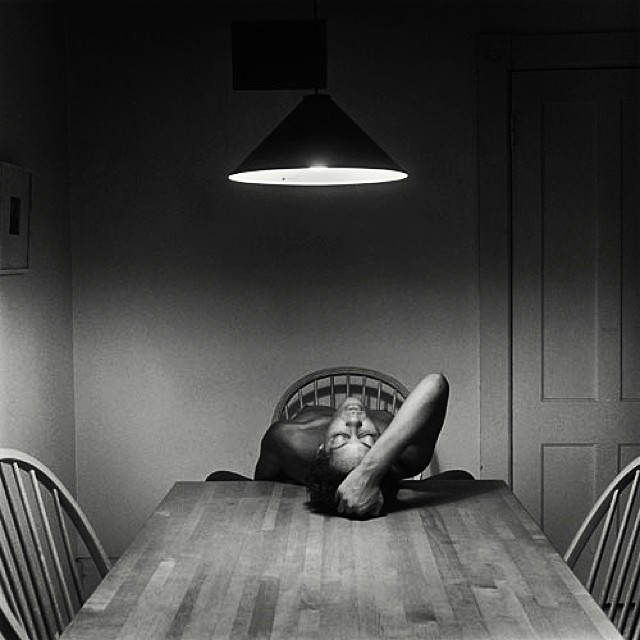
Carrie Mae Weems, “Untitled (Kitchen Table Series),” gelatin silver print and text, 1953 (© Carrie Mae Weems. Photo: © The Art Institute of Chicago)
Solomon R. Guggenheim Museum
1071 Fifth Ave. at 89th St.
April 25-27, most events free with museum admission of $18-$22, evening concerts $15-$35
Exhibition continues through May 14
212-423-3587
www.guggenheim.org
In her online biography, Carrie Mae Weems writes, “My work has led me to investigate family relationships, gender roles, the histories of racism, sexism, class, and various political systems. Despite the variety of my explorations, throughout it all it has been my contention that my responsibility as an artist is to work, to sing for my supper, to make art, beautiful and powerful, that adds and reveals; to beautify the mess of a messy world, to heal the sick and feed the helpless; to shout bravely from the roof-tops and storm barricaded doors and voice the specifics of our historic moment.” All this and more is evident in her current exhibition at the Guggenheim, ”Carrie Mae Weems: Three Decades of Photography and Video.” The show, which continues through May 14, is centered by her subtly powerful 1990 black-and-white “Kitchen Table Series,” which details the evolution of a woman photographed in the same domestic space, sometimes by herself, sometimes with children, sometimes with a man. In many ways it harkens back to painting series by Jacob Lawrence, capturing the African American experience, in this case with the focus on a woman. The show also includes photos from her “Colored People” grids, “Family Pictures and Stories” (accompanied by a voice-over by Weems), “Dreaming in Cuba,” “Roaming,” “From Here I Saw What Happened and I Cried,” “The Louisiana Project,” and “Sea Islands Series” in addition to such short films as Afro-Chic and ceramic commemoration plates, all of which explore elements of black history from an often extremely personal perspective.
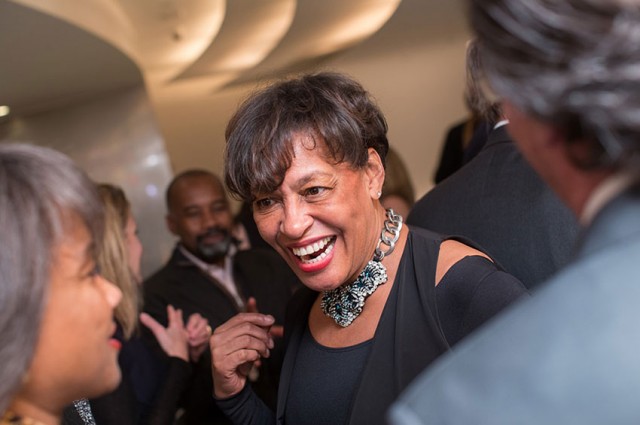
Carrie Mae Weems will cohost three days of art and activism at the Guggenheim this weekend (photo by Scott Rudd)
The Portland, Oregon-born artist will be at the Guggenheim this weekend presenting “Carrie Mae Weems LIVE: Past Tense/Future Perfect,” three days of discussions, live music, processions, readings, and more, cohosted by Weems and multidisciplinary artist Carl Hancock Rux. On Friday, there will be a tribute to conceptual sculptor and saxophonist Terry Adkins, who passed away at the age of sixty in February, with Vijay Iyer, Vincent Chancey, Dick Griffin, Marshall Sealy, and Kiane Zawadi, followed by “The Blue Notes of Blues People,” consisting of four sets of presentations by such visual artists, curators, choreographers, and scholars as Julie Mehretu, Leslie Hewitt, Shinique Smith, Thomas Lax, Michele Wallace, Camille A. Brown, Shahzia Sikander, Mark Anthony Neal, Sanford Biggers, Lyle Ashton Harris, and Xaviera Simmons. Other programs include “Written on Skin: Posing Questions on Beauty,” “Slow Fade to Black: Explorations in the Cinematic,” and “Laughing to Keep from Crying: A Critical Read on Comedy,” with Nelson George. The first two nights will conclude with ticketed concerts and conversations, with Jason Moran and the Bandwagon (Friday, with Weems) and the Geri Allen Trio (Saturday, with Weems and Theaster Gates). on Sunday, visual artist María Magdalena Campos-Pons will lead the procession “Habla Lamadre” before Weems offers closing remarks. Select programs on Friday and Saturday will be streamed live here.
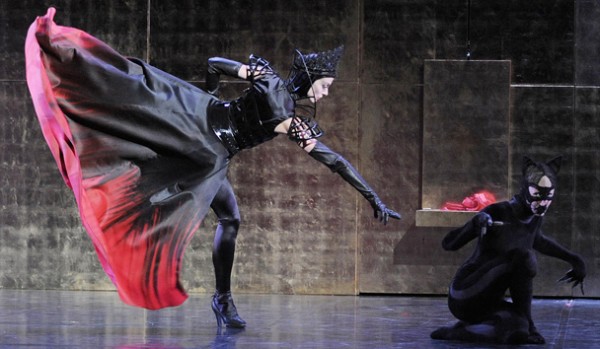
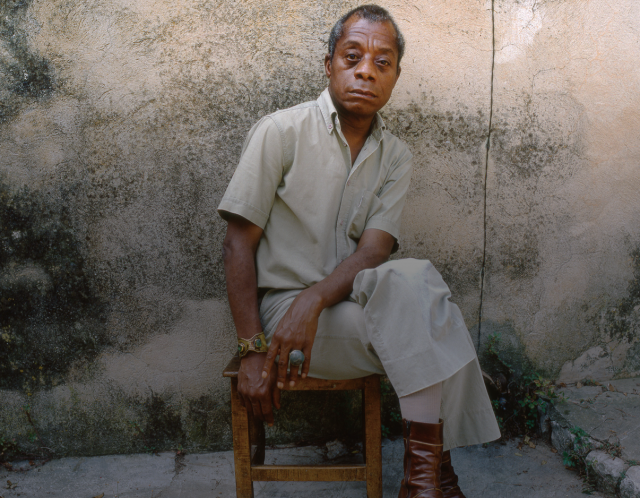
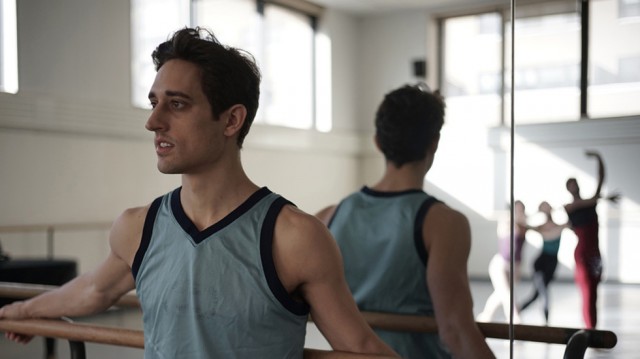
 In Ballet 422, Jody Lee Lipes takes viewers behind the scenes as twenty-five-year-old New York City Ballet dancer Justin Peck choreographs the 422nd original piece for the prestigious company, Paz de la Jolla. One of fifty dancers in the Corps de Ballet, which the film calls “the lowest rank” of the NYCB, Peck was named by company head Peter Martins to be the New York Choreographic Institute’s first active choreographer-in-residence for the 2011-12 season, and he is the only current NYCB dancer to choreograph for the company. Documentarian and cinematographer Lipes (NY Export: Opus Jazz, Tiny Furniture) focuses on the fascinating collaboration that goes into creating a ballet. “As a former soloist with New York City Ballet, I had long dreamed about pulling back the veil on the making of a new ballet,” producer Ellen Bar explains on the film’s
In Ballet 422, Jody Lee Lipes takes viewers behind the scenes as twenty-five-year-old New York City Ballet dancer Justin Peck choreographs the 422nd original piece for the prestigious company, Paz de la Jolla. One of fifty dancers in the Corps de Ballet, which the film calls “the lowest rank” of the NYCB, Peck was named by company head Peter Martins to be the New York Choreographic Institute’s first active choreographer-in-residence for the 2011-12 season, and he is the only current NYCB dancer to choreograph for the company. Documentarian and cinematographer Lipes (NY Export: Opus Jazz, Tiny Furniture) focuses on the fascinating collaboration that goes into creating a ballet. “As a former soloist with New York City Ballet, I had long dreamed about pulling back the veil on the making of a new ballet,” producer Ellen Bar explains on the film’s 
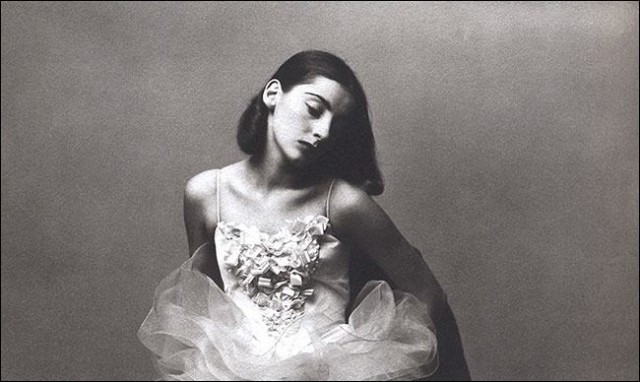
 “Tanny’s body created inspiration for choreographers,” one of the interviewees says in Nancy Buirski’s documentary Afternoon of a Faun: Tanaquil Le Clercq. “They could do things that they hadn’t seen before.” The American Masters presentation examines the life and career of prima ballerina Tanaquil Le Clercq, affectionately known as Tanny, who took the dance world by storm in the 1940s and ’50s before tragically being struck down by polio in 1956 at the age of twenty-seven. Le Clercq served as muse to both Jerome Robbins, who made Afternoon of a Faun for her, and George Balanchine, who created such seminal works as Western Symphony, La Valse, and Symphony in C for Le Clercq — and married Tanny in 1952. In the documentary, Buirski (
“Tanny’s body created inspiration for choreographers,” one of the interviewees says in Nancy Buirski’s documentary Afternoon of a Faun: Tanaquil Le Clercq. “They could do things that they hadn’t seen before.” The American Masters presentation examines the life and career of prima ballerina Tanaquil Le Clercq, affectionately known as Tanny, who took the dance world by storm in the 1940s and ’50s before tragically being struck down by polio in 1956 at the age of twenty-seven. Le Clercq served as muse to both Jerome Robbins, who made Afternoon of a Faun for her, and George Balanchine, who created such seminal works as Western Symphony, La Valse, and Symphony in C for Le Clercq — and married Tanny in 1952. In the documentary, Buirski (